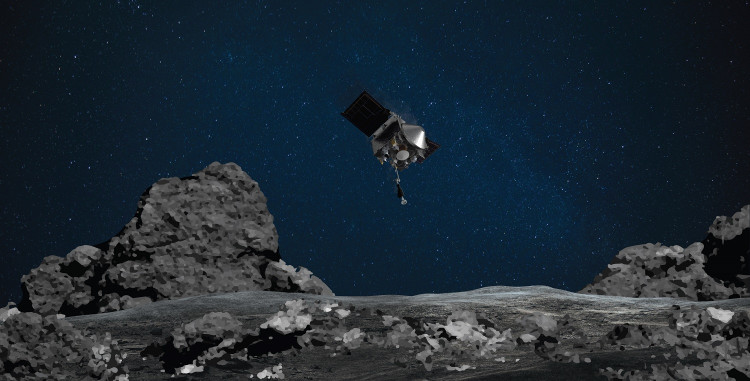NASA's Osiris-Rex spacecraft on Tuesday will touch down briefly on a large asteroid and collect some rocks and dust from its surface to be returned for study on Earth. The event is a significant first for NASA and a milestone for technology, the exploration of space, and our knowledge of the solar system.
On Tuesday, Oct. 20, at 3:12 p.m PT, the touch-and-go (TAG) sample collection of asteroid 101955 Bennu is expected to take place. NASA will live stream the TAG maneuver on NASA Live from 2 p.m. PT onwards.
Bennu is what is considered an asteroid "rubble pile," meaning it was formed back when gravity gradually forced together the remains of an ancient collision. The effect is a body shaped like a spinning top with a circumference of 500 meters and a terrain strewn with huge rocks and boulders.
Bennu is believed to be a window into the history of the solar system: a pristine, carbon-rich body carrying both planets and life's building blocks. At some time in the future, some of these resources, such as water and metals, may even be worth mining for use on Earth or in space travel.
Another feature of the asteroid makes it especially fascinating for scientists and humans in general - it has a possibility of hitting Earth in the near future. Bennu is ranked No. 2 on NASA's list of impact threats. In the final quarter of the 22nd century, existing evidence indicates hundreds of possible effects, but many have just a minute chance of eventually coming to pass.
The basic plan is that, at a rocky landing site named Nightingale, Osiris-Rex must be le to able to land successfully. To touch down on a comparatively clear space that is just as wide as a few parking spaces, the van-size spacecraft would need to negotiate building-size boulders across the landing field.
A robotic sampling arm, however, will be the only part of the Osiris-Rex that will actually touch the surface. To stir up a sample of dust and small rocks that can then be caught in the arm's collector head for safe retention and return to Earth, one of three pressurized nitrogen canisters will fire.
Osiris-Rex will fire its thrusters immediately after collecting its sample to back away from Bennu. Until actually executing a departure maneuver next year and starting a two-year voyage back to Earth, the spacecraft will continue to stick around above Bennu for the rest of 2020.
Osiris-Rex is expected to jettison its sample return capsule on Sept. 24, 2023, which will land and be retrieved for analysis in the Utah desert.





